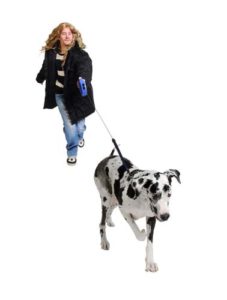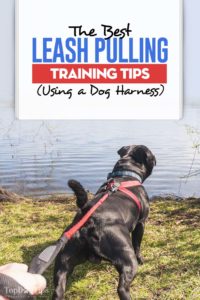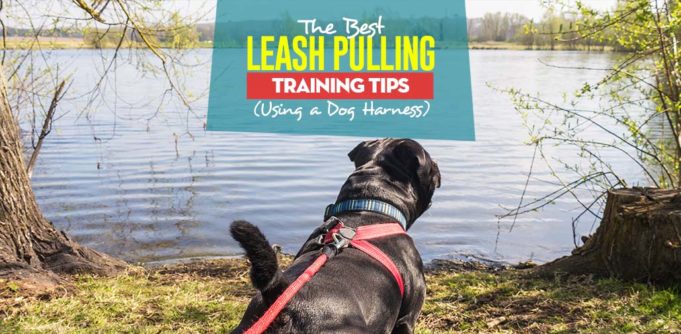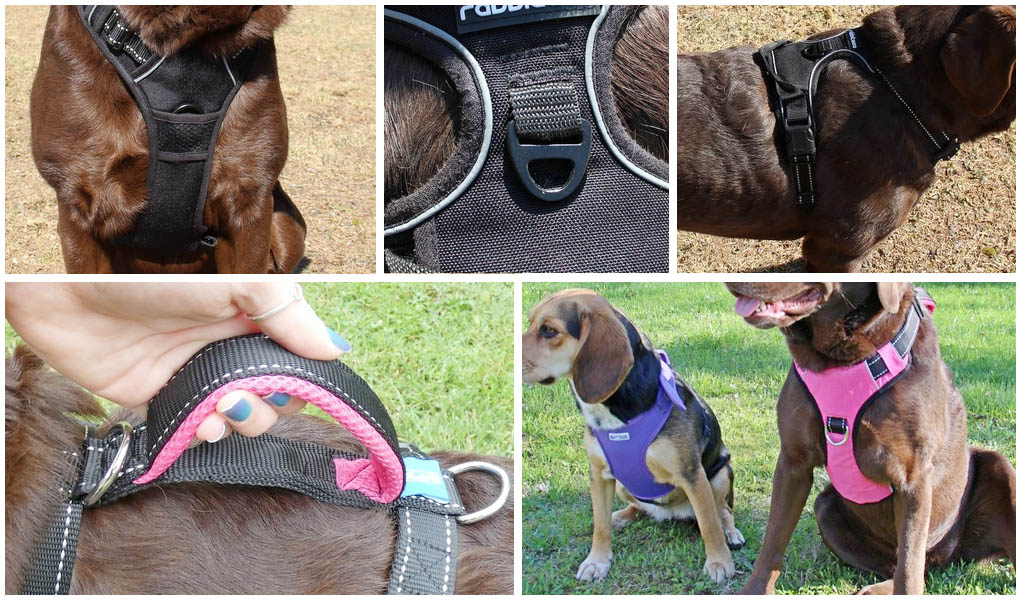You know how hard it can be to stop your dog from pulling on a leash during walks, and you thought that buying a dog harness instead of a leash will help with this problem, but that wasn't the case. It's true that using a no-pull harness for dogs that pull a lot is better and safer, but it will not solve the main issue. Harness is there simply to prevent choking and damage to dog's trachea. Only (re)training your dog can have that effect, and the process is the same as with leash-only training.
Your dog's pulling on a harness or leash is expected due to something called the dog's opposition reflex, which is when your pooch instinctively pulls away in the opposite direction, no matter what. Your dog could also pull on the harness because he is too excited or unfocused. Correcting this behavior is crucial to avoid trouble. Here are some tips to help you train your dog not to pull using a dog harness (instead of a leash).
Choose the Right Leash (for the harness)
The right gear can make a world of difference in dog leash pulling training. Go with a strong and reliable leash that's going to be attached to the harness; it should be about 4-6 feet long. This length will give your dog enough freedom to walk without restraint and give you a chance to keep control by having him close enough. Do not use a retractable leash.
Use a No-Pull Dog Harness
Even though you can teach your dog not to pull with a regular harness as well as just a leash, that may take more time and effort; if your pet is a strong puller, you're also taking more risks. Choose a no-pull harness from the get go which makes the leash pulling training easier and safer.
Make sure that the harness is properly fitted before you take your dog out on a walk. Let your dog get used to the harness for a while. Let him run around your home with the harness on and no leash. If your dog is uncomfortable, check that the fit is good; praise him for his patience, and give him a treat to help him get used to the harness.
There several types of dog harnesses you can purchase, and they all have their pros and cons. Here's a breakdown of each one of them works. Choose the one that you know will be most comfortable for you and easy for your specific dog to stay in.
Teach Him Basic Commands
All canines must know the very basic obedience commands for everyone's safety. If your dog doesn’t already know “Sit” and “Stay” commands, you should start there before you begin with leash pulling training. This will be a useful tool in many situations, and key to teaching your pooch not to pull.
Tire Your Dog Before Training
Before you start your leash pulling training, it's best to burn some of your dog’s extra energy with play or exercise. That way he will not be inclined to make the most of his walk by pulling hard on his leash. Play fetch for a while or tug-of-war since those game can tire your pooch quickly.
Find a Quiet Spot
Some dogs can get overstimulated easily. For your first few training walks, find an area that doesn’t have distractions. Other dogs, loud noises, cars and people will prevent your dog from focusing on you. Choose a quiet road without much traffic or walk your dog in your yard for a few times to get some basic training done.
Don’t Reward Pulling
 Always stay in control. Do not let your dog walk you. If your dog pulls on the leash, stop walking immediately. When you keep on walking and give in to his pace, you are sending a message that leash pulling is fine. If you unleash your dog after he starts to pull, you are rewarding him for bad behavior.
Always stay in control. Do not let your dog walk you. If your dog pulls on the leash, stop walking immediately. When you keep on walking and give in to his pace, you are sending a message that leash pulling is fine. If you unleash your dog after he starts to pull, you are rewarding him for bad behavior.
When you stop walking, your dog will stop walking as well. This can be a problem if your dog is large and strong, but you must persist. Use all of your weight to stay in one place until he stops pulling. Give it a few moments for the dog to register that it's his pulling that stopped the walk.
Use Treats as Reward
Using dog treats will help your canine learn that not pulling is a good thing. Have a bag of low calorie treats with you at all times during the walk. During the first few sessions of training, as long as he walks beside you without any pulling at all, give him a treat every few minutes or so.
If your pooch starts to get away and pull on the leash, stop walking. Call him to you and tell him to sit. Reward your pooch with affirmation or praise when he comes and sits, or otherwise listens to your commands. After that, start walking again.
After a week, begin the walk only with treats in your bag. When your dog walks by your side, offer him a treat every now and then. When he doesn’t, stop and repeat the process. Your dog should stop pulling after some time even without the treats, which is the ultimate goal. It's normal for this process to take a while, anywhere from a few weeks to a few months.
Tell Him When He’s Bad
As basic dog obedience training goes, use verbal and physical cues to let your dog know that he is not behaving properly. For example, when he starts pulling on the leash, strictly say “No” or “Stop” before you stop walking.
You can drag your feet for a little bit before you stop walking. That way, he will associate your heavy steps and dragging the feet with an impending stop due to pulling, which can prompt him to slow down or come to walk by your side. Never yell or hit your dog – it's not an effective way to deal with any behavioral problem.
Do Short Training Sessions
Keep your training walks short. This will help you and the dog stay focused on training and avoid frustration when your pooch pulls on his leash. Choose short routes in the neighborhood and take your dog to these walks more often. This is also a good way to keep your pooch focused as well since you will be walking in a familiar area which is not as stimulating as exploring new routes.
Take Breaks, Stay Consistent
Some dogs will take more time to learn not to pull on their leash. This can be frustrating for both of you and taking an occasional break during your walks is part of the training. After you recoup, you will be able to focus on the training again.
 It's important to stay consistent and not send your dog mixed messages. Do the same thing every time when he starts pulling and reward him when he listens to you. Keep at it with regular walks. If you give up the training at some point, you will have to remind your dog of everything he learned once again.
It's important to stay consistent and not send your dog mixed messages. Do the same thing every time when he starts pulling and reward him when he listens to you. Keep at it with regular walks. If you give up the training at some point, you will have to remind your dog of everything he learned once again.
All this may sound like a lot of work, and that's because it is: depending on the dog, with leash pulling training it can take quite a while to achieve perfection. But the repetition that this training requires will provide your dog with enough exercise and the time you spend together on your walks will only strengthen your bond and improve your relationship.
READ NEXT: The 7 Best Training Leashes for Puppies and Adult Dogs














